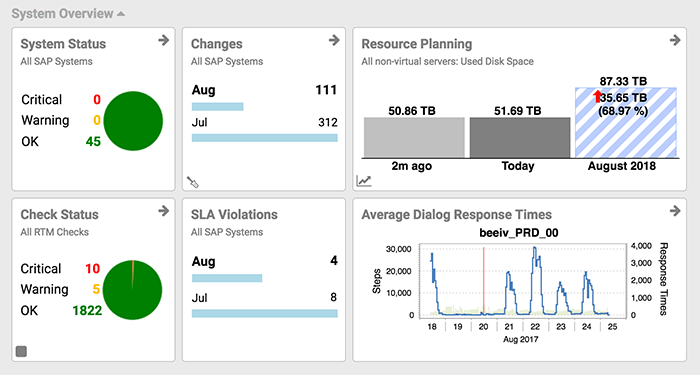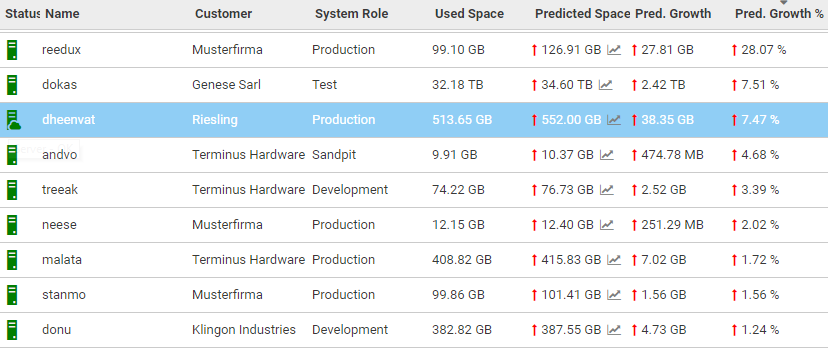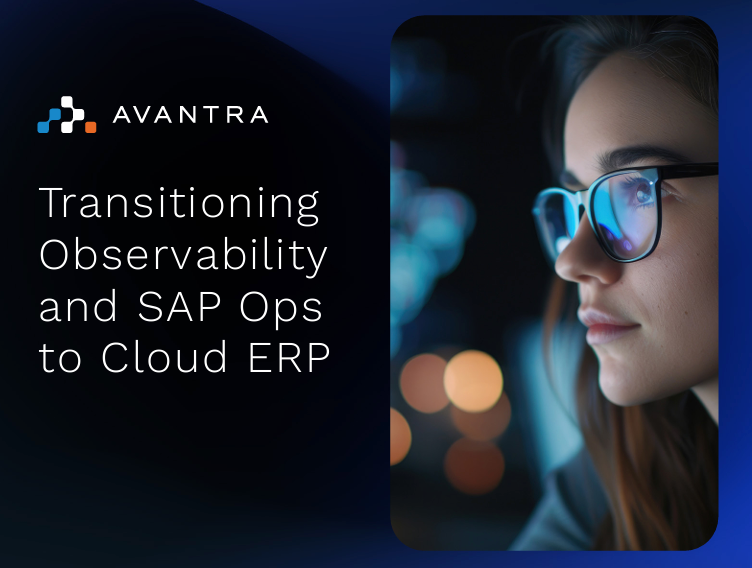5 min read
5 Ways SAP MSPs Can Set Themselves Apart From the Rest
By: Avantra Team on Jun 15, 2021 3:15:55 PM

The upwards trend of cloud adoption, not least in SAP environments, across multiple industries shows no sign of abating, and reflects a global need for agility and efficiency to support innovative businesses. The worldwide public cloud revenue is expected to grow 17.3% this year alone, according to Gartner.
With this increasing shift towards cloud and S/4HANA migrations, many businesses are turning to a Managed Service Provider (MSP) for their SAP and cloud management. In fact, the MSP market is expected to reach a value of $282 billion by 2023. However, with so many providers now offering solutions for SAP-centric companies, it is often difficult to differentiate one from the next, as many of their service portfolios look very much alike. This means customers are making hasty and misjudged choices, and 57% of MSPs are struggling to meet their customers’ needs.
Clearly, MSPs need to offer both their prospective and current customers something new to prove themselves to be a cut above the rest. They can do this by providing key services that are currently largely missing from the MSP landscape. Let’s take a deep dive into what these services are, and what they can do for an MSP that is struggling to stand out from the competition.
Operational and Performance Transparency
Undoubtedly, CIOs and IT teams want peace of mind that their systems are healthy and performing as they should be. The way to achieve this is through gaining real-time visibility on system performance and health -- something MSPs often do not provide, but should.
Only providing periodical performance reports are not enough for enterprises to feel confident in the health and performance of their systems. Having full, real-time transparency dashboards into which systems are healthy, and which might require more attention increases a business’ trust and loyalty to the MSP they are working with.
For example, if a certain system was down for an hour and the enterprise’s users had to call to notify the MSP of the failure, by then it could have already caused significant damage. This would have been reduced or avoided completely had the source of the issue been detected early before the effects grow and the situation escalates. Companies often complain about a lack of awareness of problems when working with certain MSPs, and this is a sure-fire way to avoid that.

Image 1: example of an Avantra real-time report on system health and performance
Performance-based Cloud and Hybrid Automation
MSPs offering cloud and hybrid (on-premise and cloud) automation can attract customers looking to save on costs and increase efficiency. Providing services such as SAP cloud migration and performance-based cloud scaling means businesses can manage a hybrid landscape, shifting between on-cloud and on-premise, and save on costs. Visibility into systems’ performance means they can automatically scale according to their needs, enabling them to use resources optimally.
If the enterprise is forced to use only the auto-scaling tools that their cloud provider gives them, they are often left with little-to-no visibility into SAP’s internal processes. This means enterprises may not be aware of when they need to scale up to use more resources. In addition, scaling down is too much of a risk as with no visibility inside SAP performance and processes, they could be shutting down vital activities. So, cloud and hybrid automation not only allows MSPs to save on the operational costs in managing and monitoring the cloud, and reduces the need for manual monitoring of SAP’s cloud usage, but their customers are also able to use a hybrid environment that scales their SAP and cloud usage in real-time - optimizing their performance and saving cloud costs.
Forecasting and Predictive Analysis
MSPs that offer forecasting and predictive analysis capabilities allow their customers to better budget and plan for their resource needs. By looking at past utilization and providing predictive analysis of where more resources will be needed and when, businesses can make more informed budget decisions, such as adding new hardware or budgeting for more cloud resources.
Further, such capabilities allow businesses to better plan the work schedule of their resources, so they will understand when they might need to work on the upgrade of a server, for example. Alternatively, if companies have multiple servers, these reports allow them to organize the schedule based on priority and the rate at which it is being fully utilized.

Image 2: For example, in this image from Avantra, you can see in the bottom row the currently used space, the predictive growth of the resource usage, and how long it will take to be used up.
Business Process Monitoring and Management
Finally, MSPs looking to stand out from the crowd should undoubtedly look to expand their services to include process monitoring and management too. MSPs typically monitor just the technical aspects of an SAP landscape, but should consider expanding their services by also offering business process monitoring.
For example, an MSP could provide a manufacturing enterprise with the monitoring capabilities to understand process bottlenecks on the production floor, in real-time. Or, say a company has various operations in different places with label printers tied to different processes. An MSP could provide a service that proactively identifies when the printers break down and resets them thanks to a script that automatically fixes recurring problems. With this level of real-time automation, the customer gains even more efficiency, and MSPs can add another service to their portfolio that their competitors do not have.
Audit Readiness
Almost every customer that MSPs manage go through a yearly audit -- it’s unavoidable. But not many realize the added value that offering immediate audit readiness can provide to their clients. The audits usually consist of a technical snapshot ensuring market security best practices are in place and that the customer’s policies are correctly in place over each system. Typically, an MSP helps collect the data for an audit and then backs away – hoping all is ok. However, an added benefit that an MSP can provide to its customers is 24/7/365 monitoring and reporting on all of these audit points, giving the customer peace of mind that the audit policies are in place or that change documentation is prepared.
With the sheer volume of MSPs that are active in the market right now, there’s no doubt that those that want to stand above the rest need to offer something innovative. By integrating any - or all - of these five services into their portfolio, forward-thinking MSPs can prove to potential customers that they can be trusted to help them optimize their resource usage, solve problems in real-time, and ultimately drive positive business results. Ready to learn more? Check out our article called "5 services only innovative MSPs can offer."
Related Posts
5 services only innovative SAP MSPs can offer
With the sheer volume of SAP MSPs that are active in the market right now, finding one that’s a...
50,000 companies exposed to SAP systems hacks - what can you do?
In the last 20 years, the software ecosystem has invested billions of dollars increasing software...
Smart Cloud Automation - SAP on Public Clouds
Enterprises and Managed Service Providers (MSPs) are finding that implementing and leveraging the...





